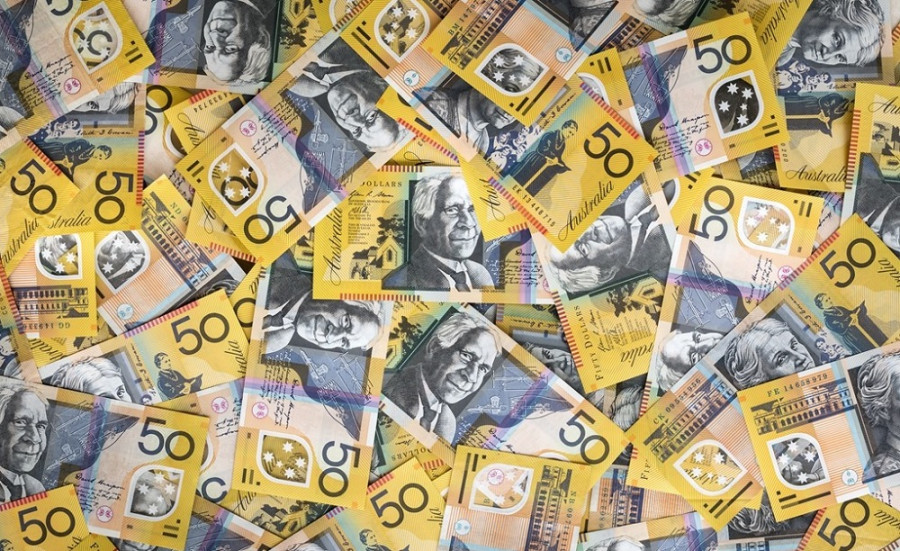The Australian labor market report for September came out better than expected. Almost all components of the report were in the green zone, allowing AUD/USD buyers to stage a corrective rebound to the 0.67 area. However, despite support from the Australian nonfarm payrolls, it is risky to plan long positions on AUD/USD. The report provides temporary support for the aussie, but it won't sustain the instrument's growth on a solid foundation. Only inflation data can help the Australian dollar. The September figures will be known at the end of October. The key catalyst will be the quarterly CPI growth report, which will determine the aussie's medium-term outlook. The labor market, in this context, plays an important but rather secondary role.

According to the red-hot data, Australia's unemployment rate remained at 4.1%, while most experts predicted an increase to 4.2%. Employment rose by 64,000 in September (with a forecast of 25,000), the highest figure since February this year. Moreover, the structure of this component shows that the growth was driven by full-time employment, while part-time jobs saw minimal growth (ratio: 51.6K/12.5K). It is common knowledge that full-time jobs offer higher wages and better social security than temporary jobs. This factor influences wage growth dynamics and, indirectly, inflation trends. This ratio is thus in favor of the aussie.
Additionally, the labor force participation rate increased to 67.2% (forecast: 67.1%), the highest level since November 2023.
Reacting to the release, the AUD/USD pair posted a 50-pip corrective rise, reaching 0.6713. This is quite an impressive rally for the aussie after a prolonged multi-day decline.
Looking at the one-week timeframe, we can see that AUD/USD has been following the overall downtrend for the third consecutive week. This dynamic is not only due to the strengthening of the US dollar, although the greenback has been the driving force behind AUD/USD's decline. The Australian dollar has also been under pressure for its own reasons.
Firstly, the buyers were disappointed by the Reserve Bank of Australia (RBA), which softened its rhetoric at its latest meeting. In the accompanying statement, the regulator noted that the Board members did not discuss the option of raising the interest rate—this was the first time since the March meeting. In the previous three meetings, the central bank had considered two options: maintaining the status quo or tightening policy. Now, the second option has been excluded from the list of possibilities.
RBA Governor Michele Bullock, at the post-meeting press conference, neither confirmed nor denied the scenario of a rate cut in the near future. Shortly thereafter, RBA Deputy Governor Andrew Hauser indicated that it was too early to talk about a "dovish turn," but if inflation continues to show signs of slowing, then "all options for further action will be on the table."
This "halfway" position of the central bank was viewed negatively for the Australian dollar. The likelihood of an RBA rate cut by the end of this year is estimated at 55-60%.
Additional pressure on the aussie came from China due to weak CPI growth and disappointing trade data. Inflation growth in China has once again begun to slow down, indicating soft domestic demand. According to Sunday's data, the consumer price index rose by 0.4% in September, compared to a forecast of 0.6%. Additionally, the trade surplus shrank in September due to a significant drop in exports. Year-on-year export growth was only 2.4% (forecast: 6.0%), while the previous month saw an 8.7% rise. Import growth was just 0.3% y/y (forecast: 0.9%). In August, this component also showed minor growth, just 0.5%. This release added to the overall pessimistic expectations regarding China's economic growth prospects.
By the way, tomorrow, October 18, China's Q3 GDP data will be published. If this release also disappoints the market, the aussie will come under significant selling pressure, erasing the current corrective growth.
All of this suggests that it is not advisable to trust the ongoing rise in AUD/USD. The aussie is too vulnerable for sustained growth, and the strong position of the greenback prevents any hope of a trend reversal. Therefore, it is prudent to view corrective spikes as opportunities for selling. If China disappoints, the downtrend could resume as early as tomorrow, regardless of the US dollar's performance. The nearest bearish target is 0.6640 (the lower line of the Bollinger Bands on the daily chart). The main target is 0.6590 (the lower border of the Kumo cloud on the same timeframe).











